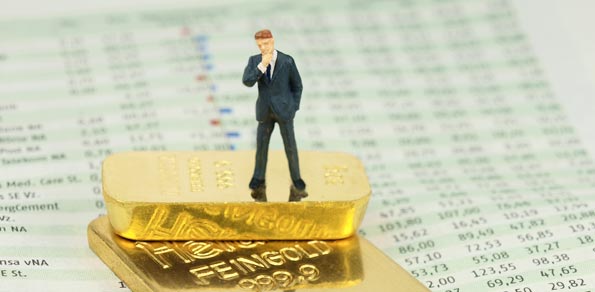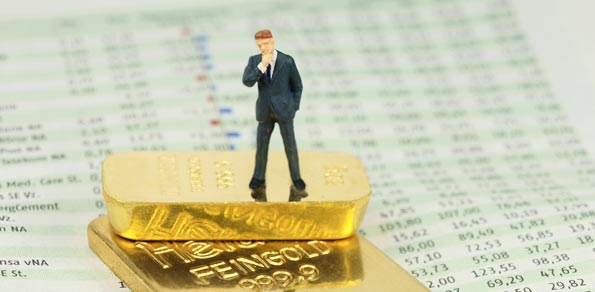Fools Gold…
 As we've pointed out several times over recent months one of the oddities regarding the current situation gripping the markets is the continual lack of 'normal' correlations. For example, normal would be markets collapsing, ergo a rush into gold and other precious metals. Or for the DJIA to rise and the greenback lose its safe haven status. But as one of my colleagues pointed out recently "everything is out at sea". Who would have thought that we'd witness a sell off in the main equities markets in the USA and a mirrored collapse in precious metals? Particularly when, in the mainstream media, we're constantly fed the narrative that investors are seeking physical gold (and other precious metals) as a safe haven due to their lack of trust of paper investments.
As we've pointed out several times over recent months one of the oddities regarding the current situation gripping the markets is the continual lack of 'normal' correlations. For example, normal would be markets collapsing, ergo a rush into gold and other precious metals. Or for the DJIA to rise and the greenback lose its safe haven status. But as one of my colleagues pointed out recently "everything is out at sea". Who would have thought that we'd witness a sell off in the main equities markets in the USA and a mirrored collapse in precious metals? Particularly when, in the mainstream media, we're constantly fed the narrative that investors are seeking physical gold (and other precious metals) as a safe haven due to their lack of trust of paper investments.
One country/continent supposedly addicted to physical gold purchase due to lack of trust in their currency and other paper investments is India, where during Wednesday's trading sessions the rupee fell to a record low. India’s rupee plunged to a record 60.7650 per dollar as investors favored the greenback after the latest data bolstered the U.S. economic outlook.
The rupee slid 1.7 percent to 60.73 per dollar in Mumbai, according to prices from local banks. It's now collapsed by 7 percent this month, the world’s worst performance, and the rupee has slumped 10.6 percent this quarter, the most since 1991. The plunge will inflict significant damage on India’s economy, whilst the central bank’s ability to halt the slide is dangerously impacted because currency reserves in India's central bank are only enough to cover seven months of imports, according to RBS Plc.
The gold price slumped to its lowest level in nearly three years during Wednesday's trading sessions. The precious metal tumbled by a whopping $53, or 4.3 per cent, to $1,224 an ounce, whilst silver fell 5.5 per cent to $18.56 amid further concerns over the Federal Reserve chairman Ben Bernanke’s comments last week about “tapering” the central bank’s quantitative easing programme.
Open a FREE Forex Demo Account Now To Practice
Forex Trading In A Real-live Trading & No-risk Environment!
One of the beneficiaries of the 'new normal' lack of historical correlation has been currency funds. According to Parker Global Strategies LLC Foreign-exchange funds gained 0.7 percent in May as the dollar rallied amid speculation the Federal Reserve may reduce asset purchases that risk debasing the currency. Among the 40 programs that report results to Parker, the performance ranged from a return of 9.4 percent to a loss of 8.6 percent, Parker said today in a statement. Twenty funds gained money, 19 programs reported a loss and one was flat. The Parker FX Index is up 1.7 percent this year and 0.8 percent during the past 12 months. The index includes 43 programs managing about $41 billion by 36 firms worldwide.
Forex focus
The pound fell versus the greenback as Bank of England monetary policy committee member David Miles renewed his call for more asset purchases/quantitative easing. A slight expansion of the bank’s quantitative-easing program would be "helpful", he informed a conference in London on Wednesday. Sterling promptly fell 0.7 percent to $1.5314.
The euro fell below $1.30 for the first time in a month due to European Central Bank President Mario Draghi stating that monetary policy will remain "stimulative", immediately hurting the appeal of assets priced in the currency.
The euro declined 0.5 percent to $1.3012 In the New York session, reaching as low as $1.2985, this being the weakest level witnessed since June 3rd. Europe’s shared 17 member currency fell 0.6 percent to 127.17 yen. Japan’s currency rose 0.1 percent to 97.72 per dollar.
Australia’s dollar rose due to political reasons, Rudd defeated current P.M. Gillard in their third face-off to decide who will head up Australia’s governing Labor party. The Aussie increased 0.2 percent to 92.77 U.S. cents after touching its strongest level in a week.
The New Zealand dollar gained versus all of its major peers after official Chinese statements that it will ease a credit squeeze consequently increased demand for higher-yielding assets. The kiwi rose 0.6 percent to 77.91 U.S. cents.
Discover Your Potential With a FREE Practice Account & No Risk
Click To Claim Your Account Now!
Canada’s dollar finally rose for the first time in circa nine days as Federal Reserve Bank of Richmond President Jeffrey Lacker stated that he expects the U.S. expansion to remain “sluggish for a couple more years". The loonie rose 0.4 percent to C$1.0470 per U.S. dollar in Toronto. One loonie was buying 95.51 U.S. cents. The loonie touched C$1.0556 per U.S. dollar June 24, the lowest level since October 2011. Canada’s dollar is down 0.9 percent this month, 2.9 percent this quarter and 5.3 percent this year.
The Standard & Poor’s 500 Index of U.S. stocks gained 1 percent whilst futures in crude oil, Canada’s largest export, rose 0.2 percent to $95.46 per barrel in New York after initially declining by as much as 1.7 percent.
The Canadian dollar has gained 0.3 percent so far this week versus a basket of nine developed nation currencies tracked by the Bloomberg Correlation Weighted Index. The Aussie dollar has gained 2.1 percent, the kiwi has increased 1.6 percent and the greenback has added 1.1 percent. Norway’s krone and Sweden’s krona lead decliners, down 0.8 percent and 1.8 percent respectively.
Fundamental policy and news events that rate as high impact on Thursday 27th June
It's a busy schedule for news releases on Thursday, firstly we have the UK's balance of payments current account predicted to show an improvement from £14bn to £11.8bn. Then the UK produces its final quarter's GDP figure predicted to show 0.3% growth.
USA unemployment claims are predicted to still hover around the stubborn 350K figure which appears to act as a gravitational magnet week in week out. Thereafter personal spending, personal income and pending home sales could positively affect market sentiment if the economists polled are correct in their positive assumptions.





